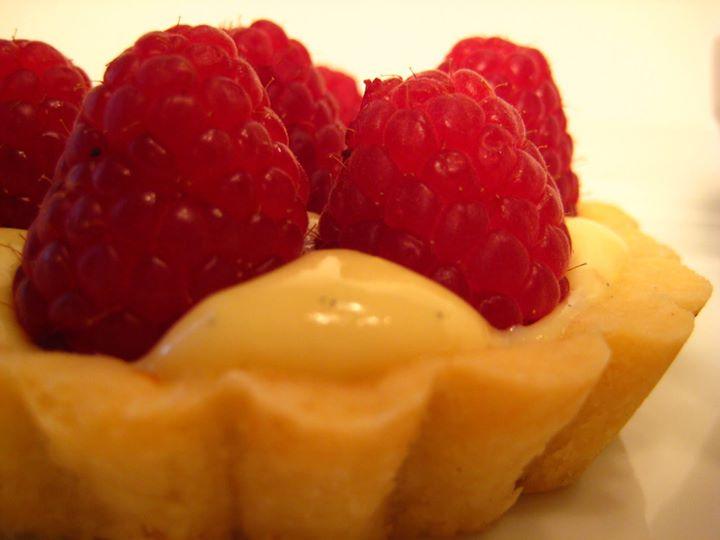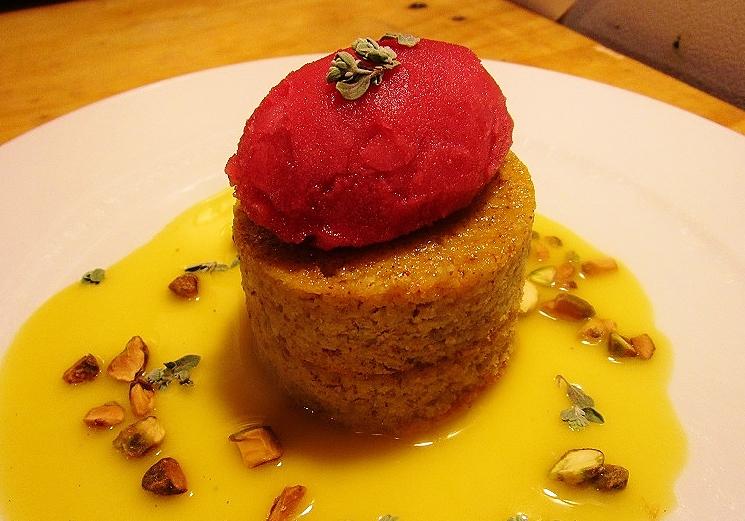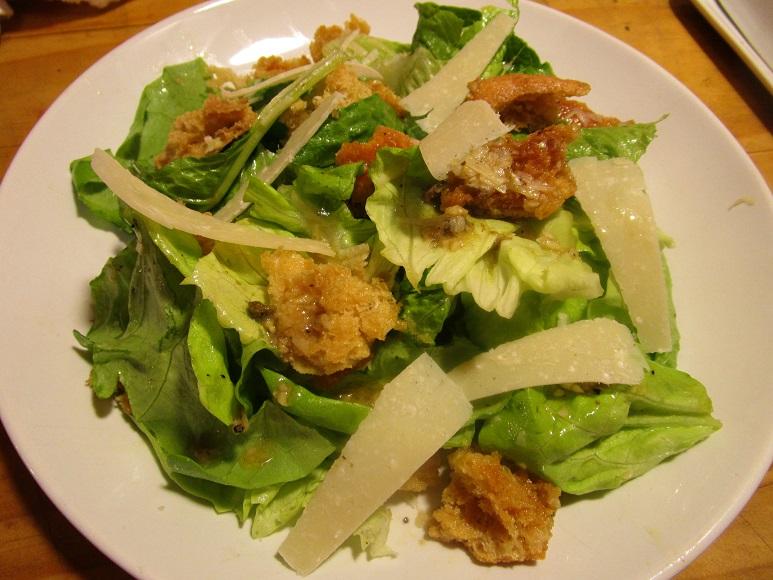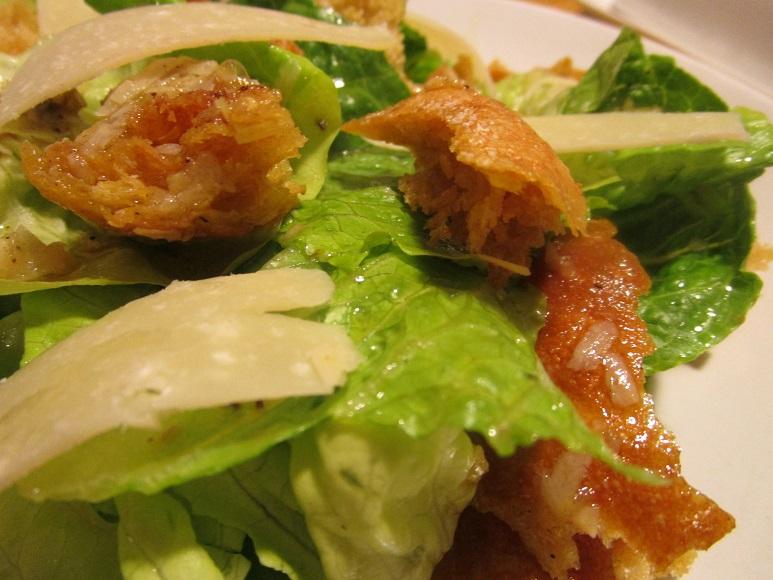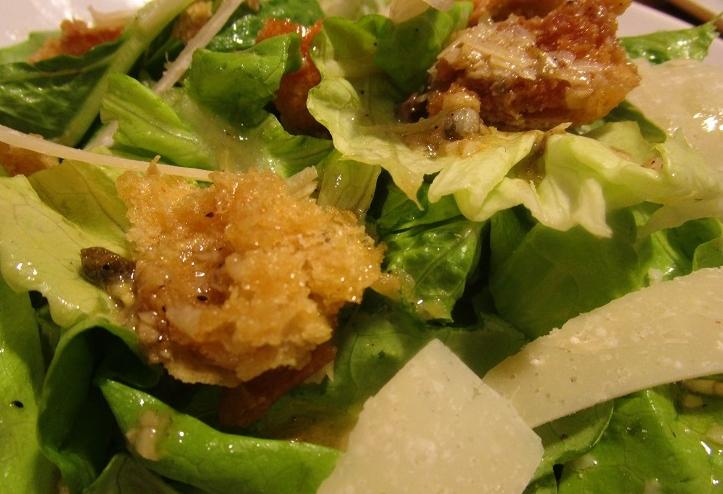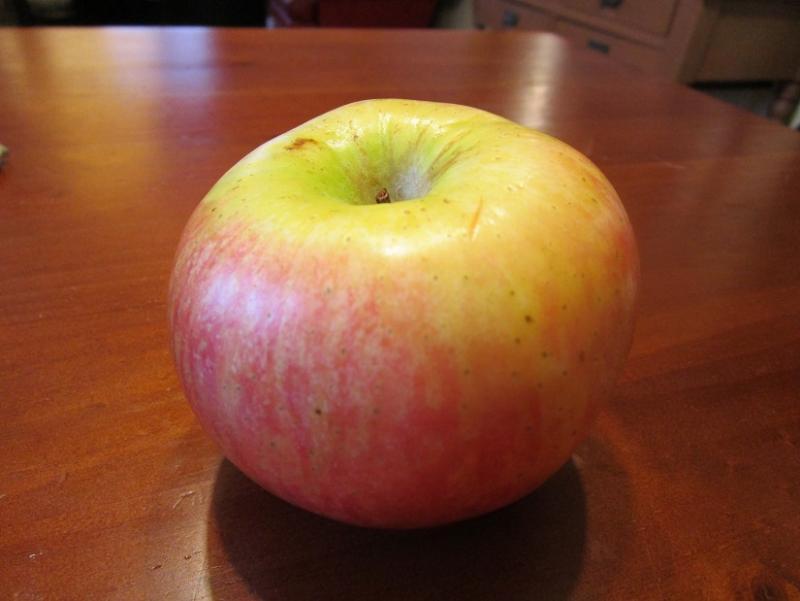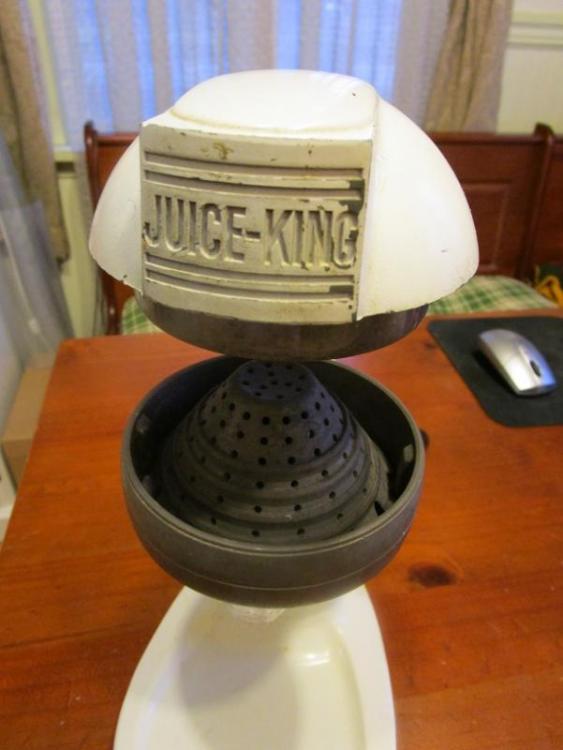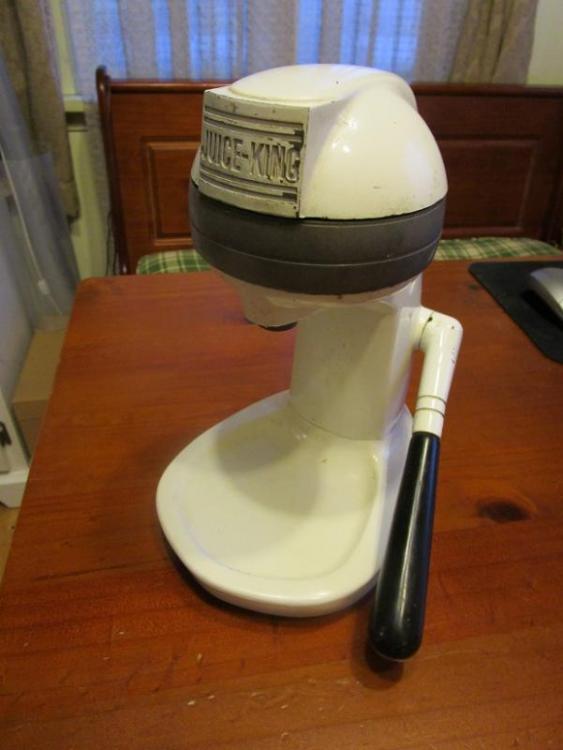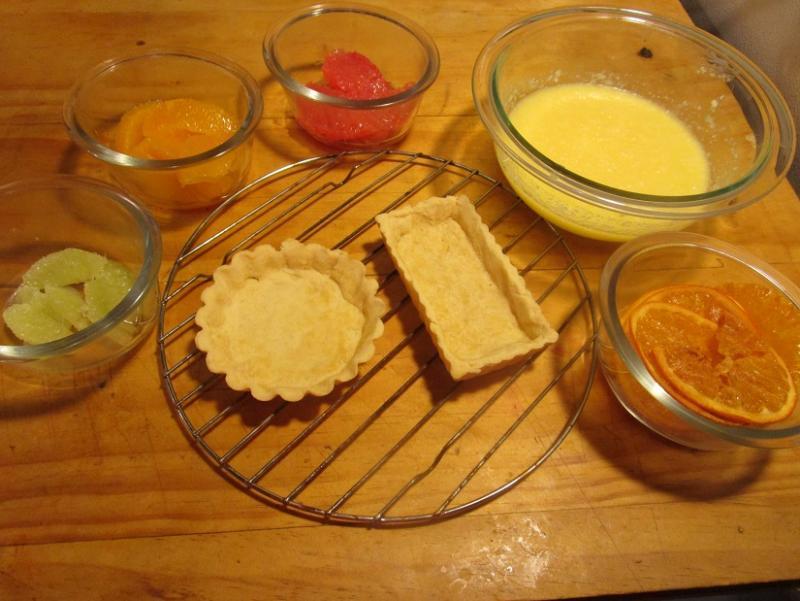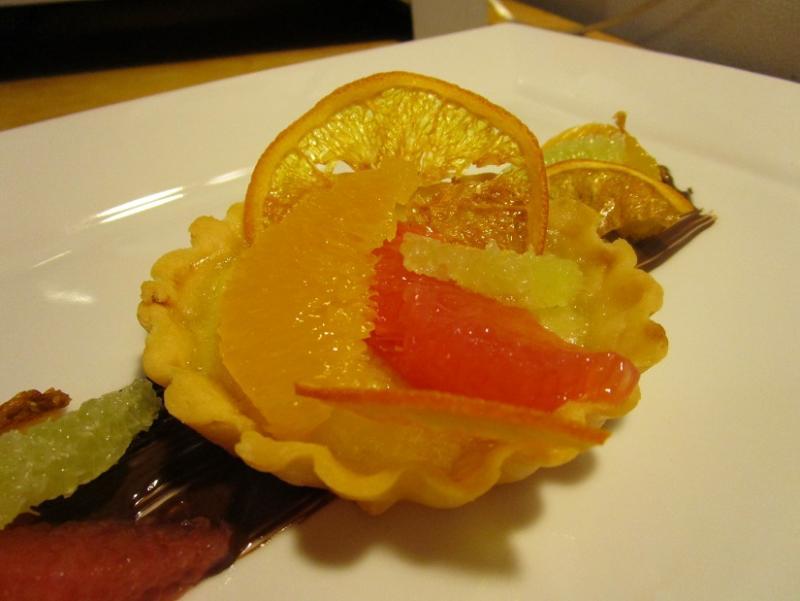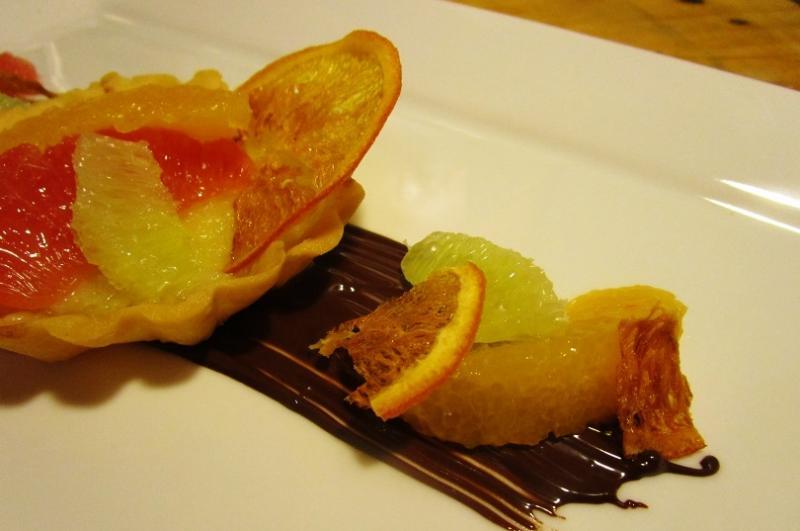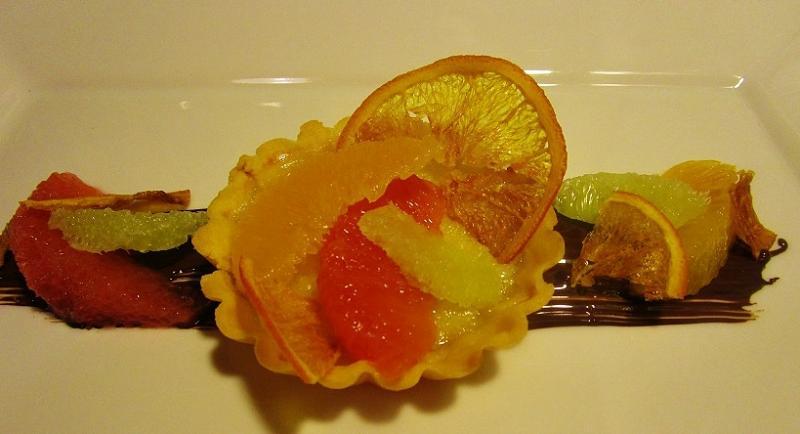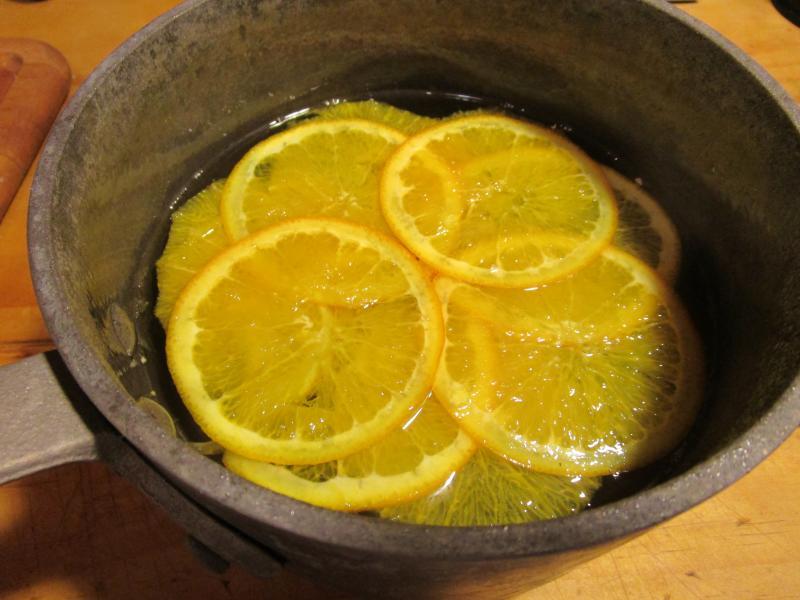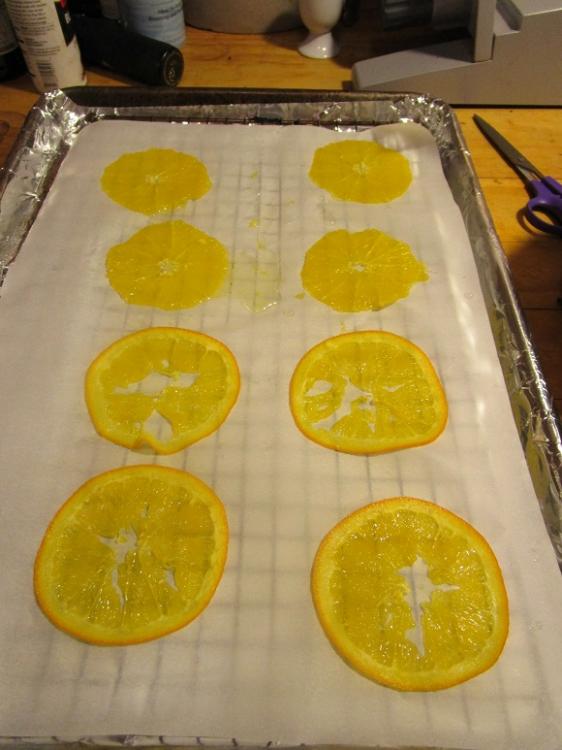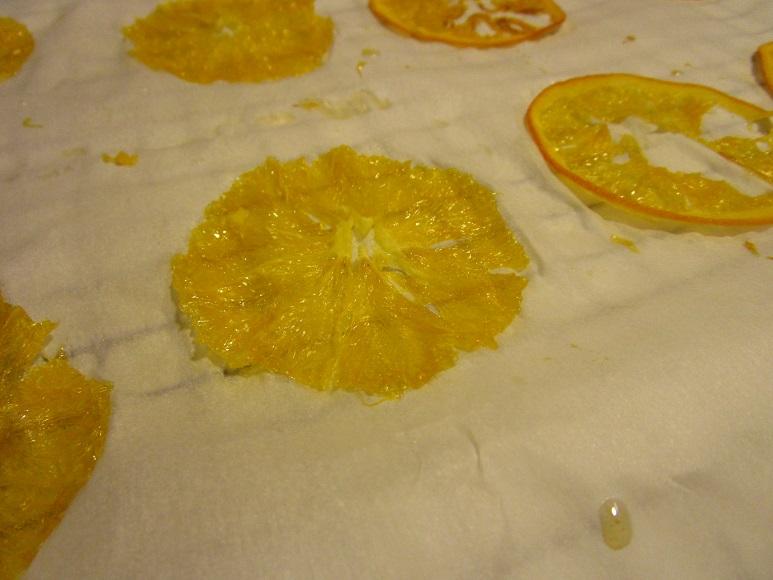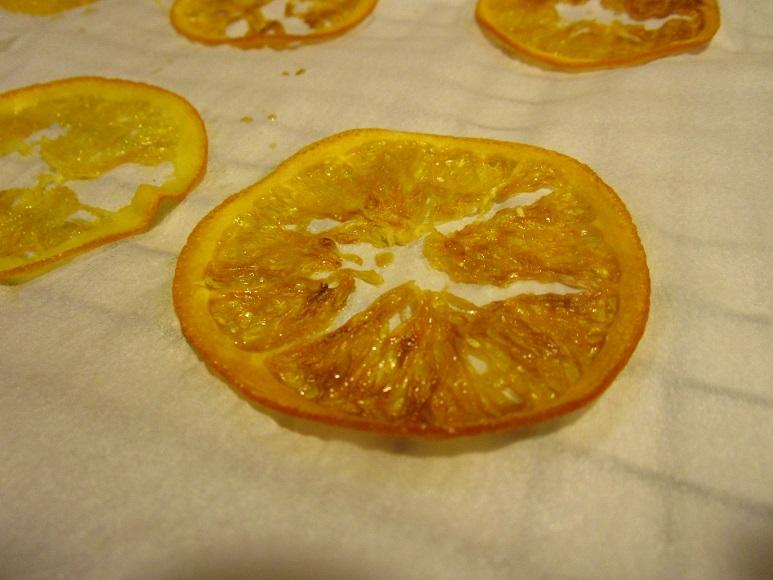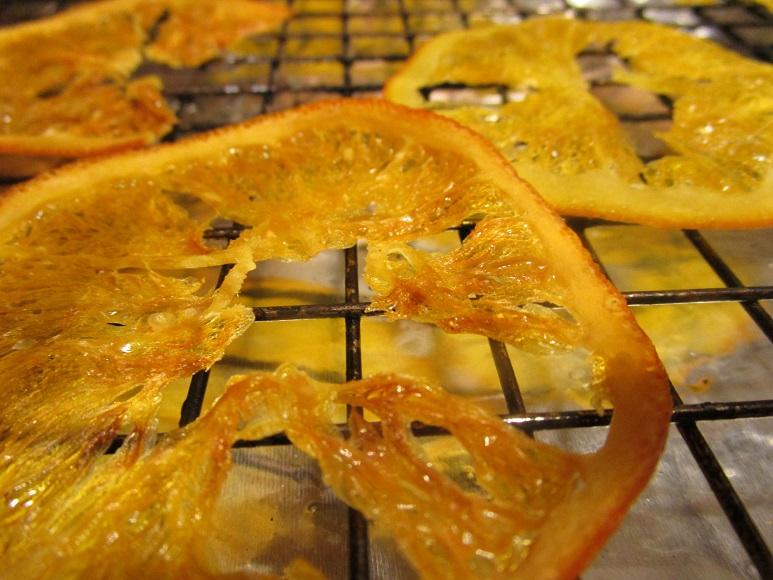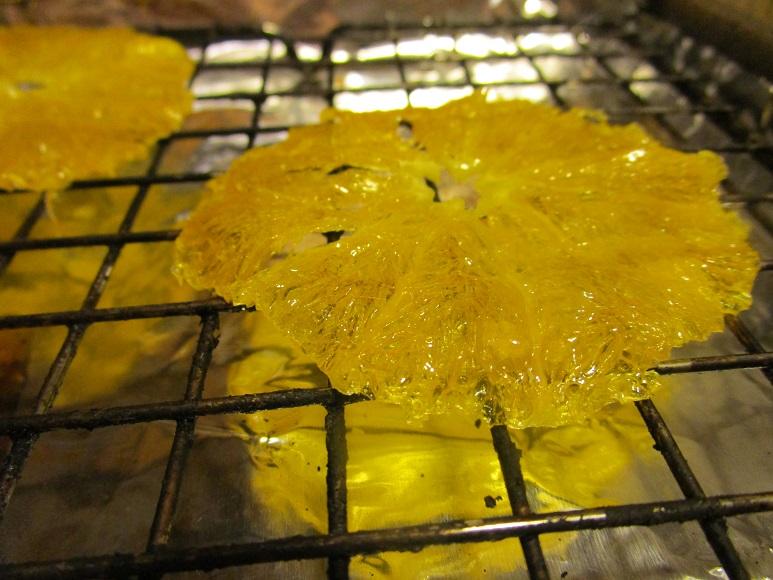-
Posts
5,035 -
Joined
-
Last visited
Content Type
Profiles
Forums
Store
Help Articles
Everything posted by David Ross
-
Well, the merguez dish had some flaws and I'll need to re-work things, but there is promise in terms of flavor, specifically citrus flavor. The merguez needed at least double the amount of fresh orange zest, say 2 tbsp. rather than one. I might try adding dried tangerine peel that I can find in the local Asian market. The merguez needed more seasoning, aka salt, and heat, aka heat fro the chiles I the harissa or more chipotle. I was planning on forming the merguez on skewers and grilling them, but that didn't work out in terms of visual appeal so I decided to make mini meguez meatballs. Turned out looking ok on the plate, but I think grilled skewers of merquez still would have been better. I think merguez patties stuffed in a pita along with the other elements would also work quite well. The reduced blood orange balsamic was good, quite good in fact. The perfect marriage of sweet and sour with the lamb merguez. The salad, a blend of greens, shaved fennel and orange segments, was very good. I also added some Greek olives, thinly sliced red onions, and dabs of bleu cheese. The vinaigrette was a blend of orange juice, olive oil and dried tarragon. Also very good, but I think fresh tarragon would have been more lively. So a good concept for using citrus in a savory application, but it needs some more work. I'm not showing the photo as it depicts pretty much a mess of lettuce and lamb meatballs, but once I get this thing closer I'll showcase the steps in photos.
-
I plan on using the blood orange balsamic syrup as a dipping sauce for the merguez. A sort of sweet and sour sauce. It's so easy to make, just reduce blood orange balsamic vinegar in a small saucepan over medium heat until it gets to a syrupy consistency. Takes just a few minutes. This is my merguez sausage recipe- Harissa- 10-12 dried red chiles, (I used both ancho and guajillo) 4 cloves garlic, minced 1 canned chipotle pepper 1 tsp. Kosher salt 1 tbsp. olive oil 1 tsp. ground coriander 1 tsp. caraway seeds 1 tsp. ground cumin 1 tsp. smoked paprika Soak the chiles in hot water for about 30 minutes or until soft. Remove the seeds and stems and place the chiles in a food processor. Save some of the chile soaking water to thin the harissa as needed. Place the garlic, chipotle, salt, coriander, caraway, cumin and paprika in the blender and process to a paste, then add the olive oil and some of the chile soaking water. Keep the harissa covered and chilled. Merguez- 1 1/2 tsp. fennel seeds, toasted 1 1/2 lb. ground lamb 4 garlic cloves, minced 2 tbsp. of the harissa paste 1 1/2 tsp. ground cumin 1 1/2 tsp. ground coriander 1/4 tsp. cinnamon 1 tbsp. vegetable oil 1/3 cup chopped mint 1/3 cup chopped basil 1/3 cup chopped cilantro 1 tbsp. minced fresh orange zest Mix all of the ingredients together and cover and chill. Sometimes I make the merguez into patties for burgers, sometimes mix it together for tacos. This time I'll form it on skewers and broil or grill it, then serve with the blood orange balsamic and the orange/fennel salad.
-
I've got the elements for the next dish ready--lamb merguez sausage, on skewers and then grilled. A fennel, orange, red onion and greek olive salad, and a blood orange balsamic syrup. I was going to add a lamb chop with ras el hanout spices, but I think that's a bit much.
-
I recently had a "Loukanika" sausage from Olympic Provisions of Portland. http://www.olympicprovisions.com/collections/meats It's a Greek-style pork sausage studded with garlic, cumin and orange rind. At first you're wondering "where's the orange flavor" and then it slowly comes forward and gives the sausage a really refreshing taste. It was the inspiration for my idea to pair lamb sausage with citrus. I'm probably going to make my lamb merguez and incorporate orange zest and serve it with a grilled leg of lamb with a chimmichurri sauce with scads of lemon.
-
Anyone have thoughts on marrying lamb with citrus? What about North African spices? Merguez sausage and citrus? I'm sort of moving backwards in terms of a dinner--started with desserts and now on with the savory dishes, maybe we'll end up with soup?
-
You know, I'm not sure because I haven't done a comparison. My sense is that if you processed raw oranges, the peel and pith would be terribly bitter. I think the cooking tempers the bitterness. I know when I made the orange chips I was skeptical of the batch with the peel and pith, but then it was cooked in a syrup before the baking/drying process and the result was an intense orange flavored chip but the peel wasn't overly bitter.
-
Very nice. That's a refreshing salad for this time of year, and, in fact, will be on my dinner table this week. I like the combination of orange and bleu cheese.
-
My second citrus dessert was pretty successful, but I think with a few tweaks it will be even better next time. The focus of the dish is a recipe for "Spiced Orange Cake" by Tom Kerridge of "Tom Kerridge's Proper Pub Food" on the BBC. The unique part of the recipe is that you stew whole oranges for 1 1/2 hours and then put the entire orange, peel and all, into a food processor to make a thick orange mash if you will. Looks basically like what comes out the back end of your juicer and is best suited for the compost pile, but that orange mash produces and intensely flavored cake. The other unique part of the recipe is the use of finely ground almonds rather than flour. It makes for a dense cake that isn't my favorite cake texture but I'll forsake texture for the flavor combination of orange and almond. Cake- 4 whole oranges 10 1/2 oz. finely ground almonds 10 1/2 oz. sugar 2 tsp. baking powder 1 tsp. cinnamon 1 tsp. ground ginger 1/8 tsp. ground cloves (my addition) 1/4 tsp. nutmeg (my addition) 7 eggs For the cake, put the unpeeled oranges in a pan with a lid. Cover with cold water, bring to the boil and simmer for 1½-2 hours, or until the skins are soft and the insides broken down. Drain and, when cool enough to handle, cut each orange in half and remove the seeds. Chop everything finely — skins, pith, fruit — in the food processor. Preheat the oven to 160C/325F/Gas 3 and grease and line a 24cm/9½in loaf tin or a 20cm/8in cake tin. (I was going to use small cake molds, but used a 9" square pan, then used a round cutter to cut individual cake rounds for each portion). Weigh the orange pulp and keep 450g/1lb (discard the rest). Place back in food processor with all the dry ingredients and add the eggs one at a time until you have a smooth batter. Pour the cake mixture into the prepared tin and bake for 1 hour -1 hour 20 minutes, or until the sides start to come away from the tin. Check the cake after 40 minutes and cover with aluminium foil to stop the top burning. Remove the cake from the oven and leave to cool on a wire rack. When the cake is cold, remove it from the tin. Notes: The finished cake was dense and didn't have the height I wanted, so I cut two rounds, placing one on top of the other to give the dish the lift I was looking for. I'm thinking a bit of cake flour would have given the cake the height I was looking for. Blood Orange Sorbet- 1/4 cup water 1 cup sugar 2 cups fresh blood orange juice 1 tbsp. fresh lemon juice Combine the water and sugar in a saucepan and bring to a boil. When the sugar is dissolved, remove the pan from the heat and whisk in the blood orange and lemon juices. Pour the mixture into a container, cover and refrigerate for at least 3 hours. Using an ice cream maker, process the blood orange juice mixture for about 30 minutes or until it begins to freeze. Put the sorbet mixture in the freezer to fully freeze and firm up. Take the sorbet out of the freezer about 30 minutes before service to soften. Notes: The sorbet was too sweet for my tastes and I would cut the sugar to 1/2 cup in the future. Tangerine Coulis- 6 tangerines, peeled 1/4 cup fresh tangerine juice 3 tbsp. sugar 1 tbsp. fresh lemon juice 1 bay leaf (my addition) 1/2" piece vanilla bean pod, seeds scraped into mixture (my addition) Combine the tangerines, juices and sugar in a blender and puree. Add additional tangerine juice to dilute the mixture. Strain into a saucepan and add the bay leaf and vanilla bean and bring to a boil. Reduce the heat to a simmer and cook the mixture for about 5 minutes. Strain again, into a container, then cover and refrigerate overnight. Stir before serving. Notes: The coulis was way too bitter. I'll add more sugar next time. I was looking to combine the aroma of bay and citrus, but I think the bay leaf added to the bitterness of the coulis. Next time I'll eliminate the bay leaf but increase the vanilla element. Finally, the sauce was too thin, so I added a bit of cornstarch mixed with water while the coulis was simmering. Not much, only about 1 tsp. of cornstarch just to thicken and add a sheen to the coulis. The garnishes included roasted, salted pistachios for crunchy texture and nutty/woodsy notes. The other garhish was little buds of fresh marjoram, an oft-forgotten herb with a hint of anise and a wonderful perfume. In fact, the best part of the dish was the scoop of blood orange sorbet with little buds of fresh marjoram. Spiced Orange Cake, Blood Orange Sorbet, Tangerine Coulis, Pistachios, Marjoram-
-
What would the world be without a true Caesar salad? Without lemon? Citrus often plays the supporting role in a dish, but without it, the affair wouldn't be so lively. Garlic olive oil- 2 cups extra virgin olive oil, (I prefer the spiciness of Greek olive oil) 10 cloves garlic, minced Let the garlic steep in the olive oil at least two hours before using. Croutons- Sourdough bread Melted butter Garlic olive oil Tear the bread into small pieces. Dry the bread cubes in a 350 oven about 15 minutes. Remove the bread cubes from the oven and place in a bowl. Toss with melted butter and some of the garlic olive oil. Season with fresh ground black pepper. Toast again in the oven until golden, about 15 minutes. Dressing- 1 1/2 cups garlic olive oil 3/4 cup fresh squeezed lemon juice 1 2oz. can anchovies, drained, chopped 2 tsp. dry mustard 1 tbsp. Worcestershire sauce 2 tsp. salt 1 egg, coddled, (simmered in hot water for about 2 minutes) 1 tbsp. capers, chopped Lots of fresh ground black pepper Salad- Butter lettuce, torn Romaine hearts, torn Parmesano-Reggiano, shredded and some shaved Place some of the croutons and lettuce in a bowl. Drizzle with a good amount of the dressing. Shred in some of the cheese. Plate the salad and then shave with more cheese using a vegetable peeler. Drizzle a bit more dressing over the croutons. Season with more fresh ground black pepper.
-
I came upon an unfamiliar apple in the market today that I'm pretty sure I hadn't seen before. The "Lady Alice" is cultivated in Eastern, Washington and was introduced early last year. (For more information, see this site, http://www.prnewswire.com/news-releases/lady-alice-apples-are-one-of-the-newest-apple-varietals-consumers-eagerly-anticipate-each-winter-245582151.html). It's a fantastic eating apple, firm texture with an incredibly sweet first bite followed by a bit of sour zing. Not sure what the cooking characteristics are but it's mighty fine eatin out of hand.
-
This morning I start crafting the elements of my next citrus dessert starting with a spiced orange cake from Tom Kerridge of "Tom Kerridge's Proper Pub Food" on the BBC. The cake is the only element I'm grafting off a Chef, I'll accompany it with my own ideas, including a tangerine coulis, blood orange sorbet, toasted pistachios and basil leaves. The idea is to evoke a rash of different citrus flavors, crunch and herbal nuttiness from the pistachios and the fresh fragrance and anise notes of basil. At least I hope so.
-
Thinking about a garnish for a spiced orange cake, what herbs do you think would work well with citrus? I once had a fabulous strawberry parfait at Guy Savoy in Las Vegas. It was garnished with tiny fraises des bois, (wild strawberries), strawberry gelee and tiny basil flowers. The anise flavor and aroma of those little basil flowers worked perfectly against the sweet yet tart berries. Do you think basil would work with citrus?
-
I use a well-seasoned, (meaning years of cooking), cast iron pan that doesn't need any oil. For a New York steak about 1" thick, sear it in a hot cast-iron pan. (Have the windows open and the fan turned on high). I sear each side about 3 1/2 min., then into a hot 450 oven for another 3 min. per side. Take it out of the oven and onto a wire rack to rest. I live to save the juices for a sauce. With this basic technique I get a medium-rare steak every time.
-
You know the moment I saw your dish, I thought how moist and juicy that looks. That was before I read that you used sous vide. Brilliant.
-
It is pretty heavy and fear the orange that has to go through the bear down. Lovely, fresh juice is the result and it doesn't take any electricity, just elbow grease.
-
In the opener to our Cook-Off, I shared a memory of my Grandmother Edna May Pink and the grapefruit I imagined she served at a Ladies Bridge Club Luncheon. This morning as I was reaching for the food processor, I found this treasured juicer sitting quietly on the back shelf. Then I remembered. This is my Grandmother's citrus juicer. I have no idea how old it is, but the streamline design certainly fits with the décor of an American kitchen of the 1930's. How ironic it would nudge to the front of the line during our Citrus Cook-Off.
-
I agree. My lemon bars beat this lemon tartlette hands down.
-
Here are the elements ready to finish the Ducasse Lemon Tartlet. From the left, fresh lime, orange and grapefruit "supremes," lemon filling, orange chips (both with and without the peel), and "rich sugar pastry" pre-baked shells. The lemon filling is spooned into the shells and baked per the recipe in a 300 oven for 17 minutes. The photo of the finished dish in the cookbook is cropped very close, so close in fact that I couldn't get a good idea of how it should look on the plate. I've been watching "MasterChef UK-The Professionals," lately so I referred back to some pastry platings from talented young British Chefs. My version of "Tartlette au Citron et Agrumes, Chips d'Orange"-(On an American menu we would probably title this little beauty a "Lemon Bar Tart with Citrus Salad and Bittersweet Chocolate.")- I think I'd make some changes to this dish next time: -Use my shortbread crust that I use when making lemon bars. It's fail-safe, butter, a bit of flour and plenty of powdered sugar. You just press it into the pan or tart shell, no rolling needed. -Use my lemon bar filling which includes lemon extract and grated lemon peel for a stronger flavor. Ducasse instructs you to serve the tartelette warm, but I prefer a lemon bar custard which has chilled and set, then served at room temperature. The Ducasse filling was a blend of lemon juice, melted butter, powdered sugar and eggs, but I found it too runny, taking over twice as long to cook to set as the recipe directed. -I considered adding a small scoop of orange sorbet, but that would only be gilding the lilly. Another nice touch but you really don't need it. -This was the first time I've eaten fresh lime wedges and it was quite the tart surprise. Next time I think I'd coat the wedges with sugar and caramelize them to add both sweetness and texture. -I used a 4oz. bar of Ghirardelli bittersweet chocolate, (the premium baking bar), 60% cacao. I simply melted it in a bowl over a pot of slowly simmering water. It was the perfect bittersweet balance against the tart citrus fruit and the creamy lemon custard. Surprising since the chocolate was the one element I added to the original Ducasse recipe and it turned out quite good. The best flavor combination of the dish? A spoon of warm, bittersweet chocolate, a fresh orange supreme and a crispy orange chip. Devine is a fitting description.
-
The sweet pastry is in the fridge resting and tomorrow I'll craft the lemon filling for the tartelette. It's time to start planning my next citrus dish. I'm thinking of doing a variation of a spiced orange cake. The recipe calls for using regular oranges, but I'm thinking of using blood oranges. Does anyone have experience baking with blood oranges? Do you use more or less sugar in a cake that uses blood oranges?
-
Damn. Off to the liquor store we go!
-
Now we've been tempted, so please share the elements of that refreshing cocktail.
-
The longer the better. After three days I'd say it will still be pretty stiff alcohol but by week three it would be better. Some of the fruitcakes we've been discussing here have been aging nearly 10 years.
-
I had considered putting them over a fine mesh screen, but decided against it and went with the parchment Ducasse calls for. I will however try it with my screen next time. I haven't tried that method for fruit slices, but I have for veggies and baked goods. I usually spray it with non-stick spray first so that helps with the sticking issue. One downfall of using the screen is it leaves a cross-hatch imprint on the food. That's o.k. for the bottom of a pizza crust, but probably wouldn't look great on my orange slices. This is another great cause for more experimentation and I like my new approach of testing all the elements first. I typically go into a new dish blind and put everything together at the same time, but using my new approach I can test the garnishes, lemon filling, chocolate sauce and pastry crust first.
-
Well, my first attempt at making the Ducasse "orange chips" ended up with some good results, albeit with a few changes to the recipe instructions. So I faced a couple of roadblocks up front. I noticed that in the cookbook photo, Ducasse shows the lemon tartelette garnished with "orange chips" with the peel on. However, the recipe calls for peeling the orange slices. The tartelette is also garnished with candied peel, yet the method for making the candied peel is missing from the recipe. Such are the details one finds missing in cookbooks, even at the Michelin level. I decided to craft both peeled and unpeeled orange chips. To start making the orange chips, you have to slice the oranges "paper-thin." Aha I thought, my French mandolin will do the trick. Na-da. The orange slices didn't hold up "paper-thin" when passing through the mandolin blade. Then I remembered the trusted tool I use for slicing all sorts of things--meats, cheeses and breads--my electric meat cutter. Now I can add oranges to the list of slicing possibilities--really, really, paper-thin slices of orange. You aren't pushing the fruit through the blade like on a mandolin, but rather, gently nudging the orange through the electric blade. A table saw for citrus if you will and it delivers precise slices every time. I found the peeled slices almost too delicate to handle. The slices with the peel were more sturdy, but I worried the peel and pith would have a bitter flavor. We would see. The cooking process starts with a simple syrup of 4 parts water to 2 parts sugar. Bring to the boil and let cook for about 10 minutes until reduced by half. Now gently tip in the orange slices and take the syrup off the heat. Steep the orange slices in the syrup for 5 minutes. Now this step is really tough, at least it was for me and my stubby fingers. You have to gently place the orange slices on parchment paper laid over a cookie sheet. (I took your suggestions and did as instructed. I didn't place the slices on a metal screen). Fingers didn't work, so I gently nudged each orange slice out of the syrup onto a wide spatula and used the spatula to deliver the slice onto the parchment. Bake the slices in a 325 oven about 25 minutes or until they just start to turn caramel. Turn the oven off and let the slices dry in the oven for one hour. OK, they look good, great actually. Now let's check the texture. Ugh, orange slices stuck to the parchment. This step takes as much patience as noodling the slices with a spatula from the syrup to the parchment--it takes delicate care to gently pull each slice from the parchment. I suppose more time in the oven would have dried the slices to the point where they would have been easier to pull off the parchment, but I didn't want to let something paper thin go too far. The unpeeled slices were the toughest--same time in the oven as the slices with peel, but still tacky and tough to pull up. The peel on the other slices acted as sort of the rim around the frame of the orange so they were easy to pull up and more crispy. Hmm. Odd science, but I go by touch and flavor. Once removed off the parchment, I placed the slices on a cookie rack to dry overnight. This morning I did a comparison. Visually I think both the peeled and unpeeled slices are worthy of garnishing a Ducasse lemon tartelette. I like the imperfect shape and all the little nooks and crannies in the orange slices. The unpeeled slice was chewy, not yet at the "crisp" stage and the flavor was good but not the strong orange flavor I'm looking for. Too tame. I feared the peel would make the other slice too bitter, but I remembered that I do love a good candied orange peel. It was heaven, crispy, crunchy, just a tad bitter, yet sweet and bursting with orange flavor. The thin layer of peel that had been steeped in syrup, baked and then dried had retained just enough orange oil to deliver flavor that wasn't too bitter. This will be a fine little garnish for the lemon tartelette and I think go quite well with my chocolate sauce. I think.
-
Thanks for the info. It will be a challenge for me to "slice the oranges" paper thin as Ducasse directs. Then we'll proceed with baking and drying the oranges.

